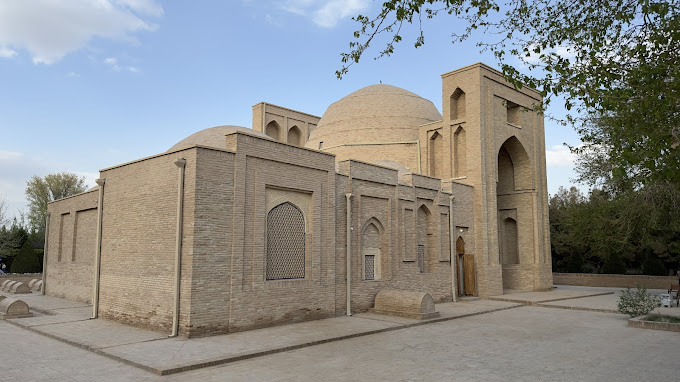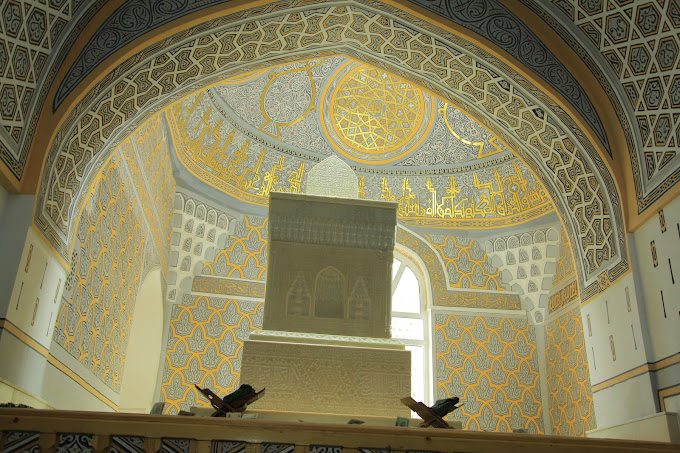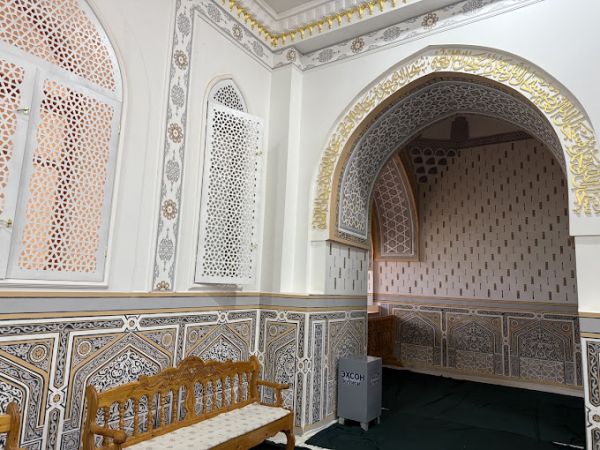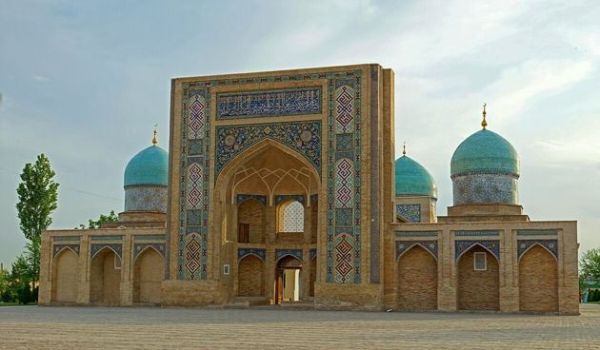The architectural complex of Hakim at-Termezi
In the southwestern part of the Old Termez settlement, on the elevated bank of the Amu Darya, near the walls of the ancient citadel, the domes of the architectural complex of Hakim at-Termezi are visible from afar. Medieval Uzbekistan gave the world many outstanding personalities, and one of them is Isa Muhammad ibn Sawra ibn Musa al-Dahhak as-Sulami, known in the Islamic world as Imam at-Termezi. He was the founder and sheikh of the Hakimi Sufi Order, the "order of the sages," and remained in history as an outstanding Muhaddith, a sage.
At-Termezi was born in 824 in the small Surkhandarya village of Bus near Termez. It should be noted that in the 9th century Termez, along with Bukhara and Samarkand, was the largest center of science and culture of the Islamic East. According to legend, at the age of ten he received a revelation from a miraculous elder who blessed him to study and interpret the Koran, as well as the life, deeds and sayings of the Prophet Muhammad. This mystical phenomenon had a great influence on the formation of the philosophical views of the young at-Termezi.
In his youth, he performed the Hajj to Mecca, and then stayed in Arabia for many years, where he became a disciple and associate of the great hadith scholar al-Bukhari. There he critically reinterpreted many interpretations of the Quran and hadith and created a coherent and consistent system of views on the essence of faith in Allah and its first bearer, the Prophet. They were described in the theological works "A Treatise on differences and interpretations in Hadith", "The Book of Piety", "The Book of Names and Nicknames". Al-Termezi has written more than thirty books, but his most famous work was entitled "The Great Collection." During the scientist's lifetime, it was translated from Arabic into Persian and Old Uzbek. It contained 408 hadiths about Muhammad's personal life, habits, tastes, character, and even appearance in a vivid literary form.
Al-Termezi's writings on the meaning of Muslim rituals, on various categories of mystics, his sermons on "love for the knowledge of God" and his remarkable historical and biographical work on Sufism and Sufis are still of great interest today not only from a historical point of view, but also as philosophical works.
In his declining years, at-Termezi returned to his native Termez and settled on the outskirts of the city, next to the remains of an ancient Buddhist temple. This place has long been considered sanctified by prayers. Even today, locals find stone bases and fragments of column parts, burnt bricks and ceramics from the time of the Kushan Kingdom. In the 9th century, a four–domed khanaka building, a Sufi monastery, was erected on the ruins of the temple. A part of the old khanaka has been preserved to this day – a vast courtyard surrounded by thick mud walls and a semi–basement khujra, a Sufi cell. According to legend, it served Sheikh at-Termezi as both a shelter and a prayer hall, and here he also communicated with his Murid students. At the same time, he received the nickname Hakim at-Termezi – "the sage of Termez."
When he died in 892, he was buried in the courtyard of the khanaka. In the 11th century, a mausoleum was built over the grave of the imam, facing south, and a chillakhana was added next to it. Initially, the tomb was a small domed structure with a simple, even ascetic decoration, only its dome was decorated with a carved ganache. These ancient ornaments have been preserved to our time. At the end of the 14th century, when the region became part of the empire of Amir Temur, a new tomb was erected near the facade of the mausoleum, and a magnificent white marble sagan tombstone was erected over the grave of the saint, a true masterpiece of ornamental stone-cutting art. A memorial aivan mosque was built nearby, and at the beginning of the XV century a monumental khanaka was built – a hospice for dervishes with an extensive hall for Sufi mystical delights.
The epitaph is carved on the end of the at-Termezi tombstone.: "In the name of the one who is praised. This is the markad of Sheikh, imam, scholar, saint Abu Abdullah Muhammad bini Ali Hakim Termezi, may Allah have mercy on him. He was the greatest of the great Sayyids, possessed high eloquence, wrote famous works and composed wonderful sayings. He was a friend of Abu Abdullah Bukhari, the author of the collection "Sahih". Among the sheikhs, he studied the laws better than the Hanafi lawyers. He died, may Allah save him, in the year 255 of the prophetic hijrah."
In 1990, by decision of UNESCO, the 1000th anniversary of Hakim al-Termezi was celebrated. He is considered the spiritual patron saint of the city of Termez. The holy way of life of the imam, his spiritual qualities and philosophical views were an example for contemporaries to follow and became an example of asceticism and faith for posterity, and the mausoleum of Hakim at-Termezi has long become a place of pilgrimage for Muslims all over the world.














